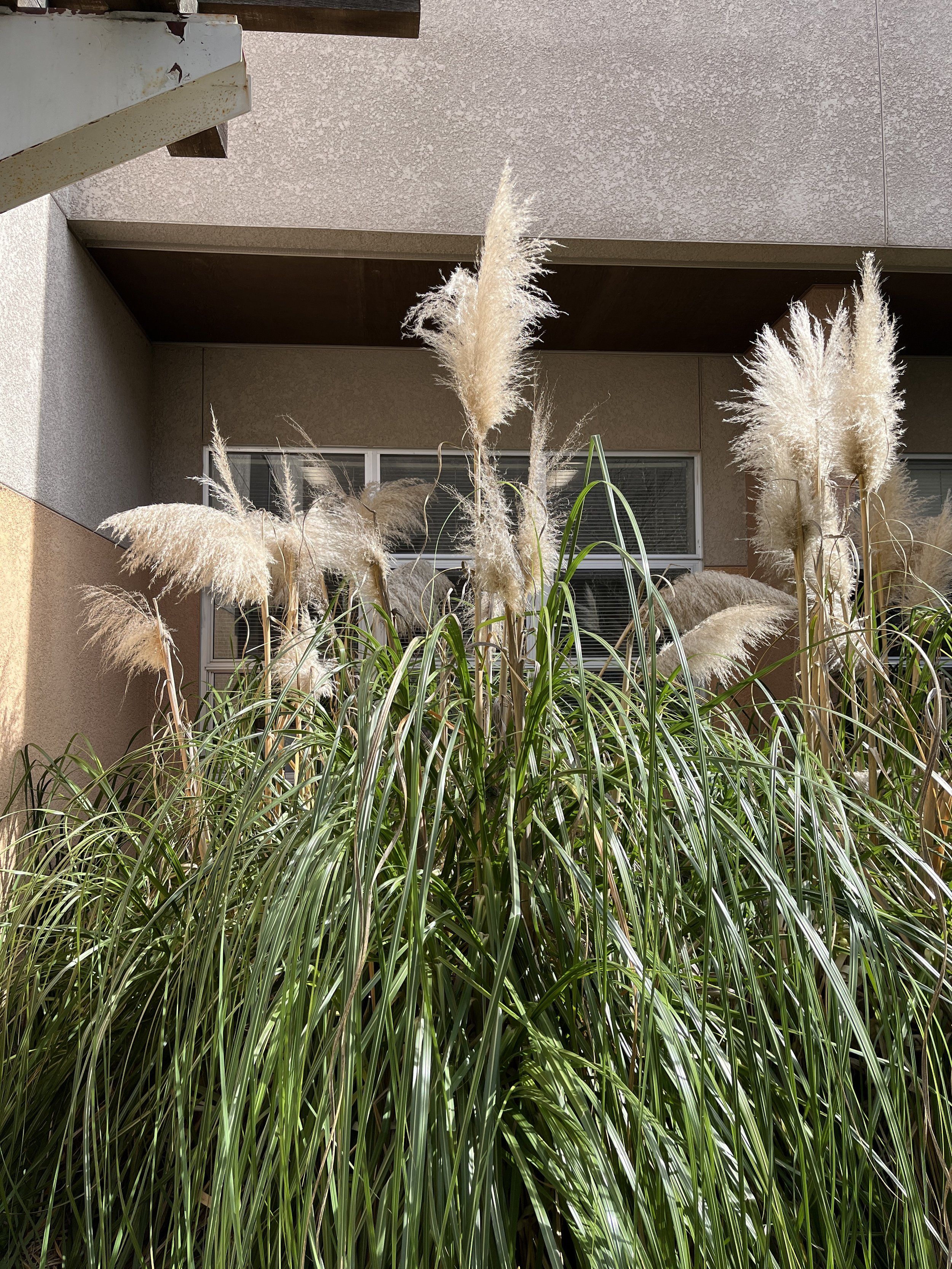Maria Carrillo has an invasive plant problem
Strawberry tree berries cover the ground of the quad every fall, creating a tripping hazard for students (Annika Umholtz, The Puma Prensa)
By Emerson Parker, news editor
Green lawns, colorful flowers, and bright red berries— while beautiful, the plants that call Maria Carrillo home are from Europe, Australia, and South America, not here— and they require many more resources than the native plants that should be on our campus. In fact, when identifying plants on campus, I found only four native species out of the 18 species I checked. Our school has a dearth of native plants, and with so few, we are hurting our local ecosystem.
One notoriously invasive plant on the MCHS campus is pampas grass, which, in bloom, has tall, cream colored feathery flower heads that tower over the grass. Each of its plumes produces up to 100,000 seeds, which are dispersed by wind up to 20 miles away. Even if we suppress pampas grass from spreading within our campus, the seeds will travel for miles, displacing native plants and animals, as evidenced by the numerous patches of pampas grass seen all over Sonoma County. Furthermore, according to the California Department of Fish and Wildlife (CDFW), pampas grass has “leaf blades that are highly undesirable as food or shelter to birds and other wildlife, and can actually cause physical harm to those animals, including humans, because the leaves are extremely sharp.” This makes pampas grass even harder to remove once it has taken over an area. Therefore, pampas grass has been placed on the “Don’t Plant Me” list by the CDFW, along with eight other incredibly invasive plants, such as iceplant and English ivy. Additionally, the oils in pampas grass make it extremely flammable. One good alternative to pampas grass is Giant Wildrye, a California native that attracts many bird species.
Strawberry trees are another non-native plant at MCHS. Every winter, the trees drop tons of red and yellow fruits on the ground, which. Fessehai Woldeslassie, the head custodian at Carrillo, said, “We have to clean [the fruit] up every day. These trees take a lot of maintenance. They shouldn’t have been planted here.” Although they attract bees and butterflies because of their fall blooms, many other plants in that family bloom in the winter and aren’t as messy as the strawberry tree, including the Rincon Manzanita, which is only endemic to Sonoma and Mendocino counties. Another great option would be the Eastwood Manzanita, which is also a native and hosts over 50 native moths and butterflies.
Pampas grass, an invasive species, growing in the office courtyard. (Emerson Parker, The Puma Prensa)
Even if MCHS got rid of its invasive plants, our campus would still have very few native plants. “Native plants are drought tolerant, and many species of animals depend on them. Places with more native plants have more biodiversity— much more than MCHS has,” said Beatrice Pezzolo, a junior and the president of Citizen Science Club at our school. Pezzolo added that she sees “a lot less biodiversity, because flowers are planted for aesthetics as opposed to helping the environment.” “Planting natives will raise awareness and educate people about our local ecosystem, which is really important,” said senior Gemma Ahern.
There are many plants that could replace nonnatives. Some ideas include: Sonoma sage, which attracts hummingbirds and bees, yarrow, which hosts 15 species of butterflies, and California fuchsia, which is extremely drought tolerant. Not only are these plants beautiful, they also use less water and support more native pollinators than non-native plants.
As much as it might not seem like it, Carrillo’s campus is irrevocably connected to the natural world around it. Whether or not we provide a home for native organisms matters, and MCHS has a responsibility to promote biodiversity and help the environment. As Pezzolo said, “Planting native plants is one of the easiest things an individual can do to make up for the harm we’ve done to the environment.


